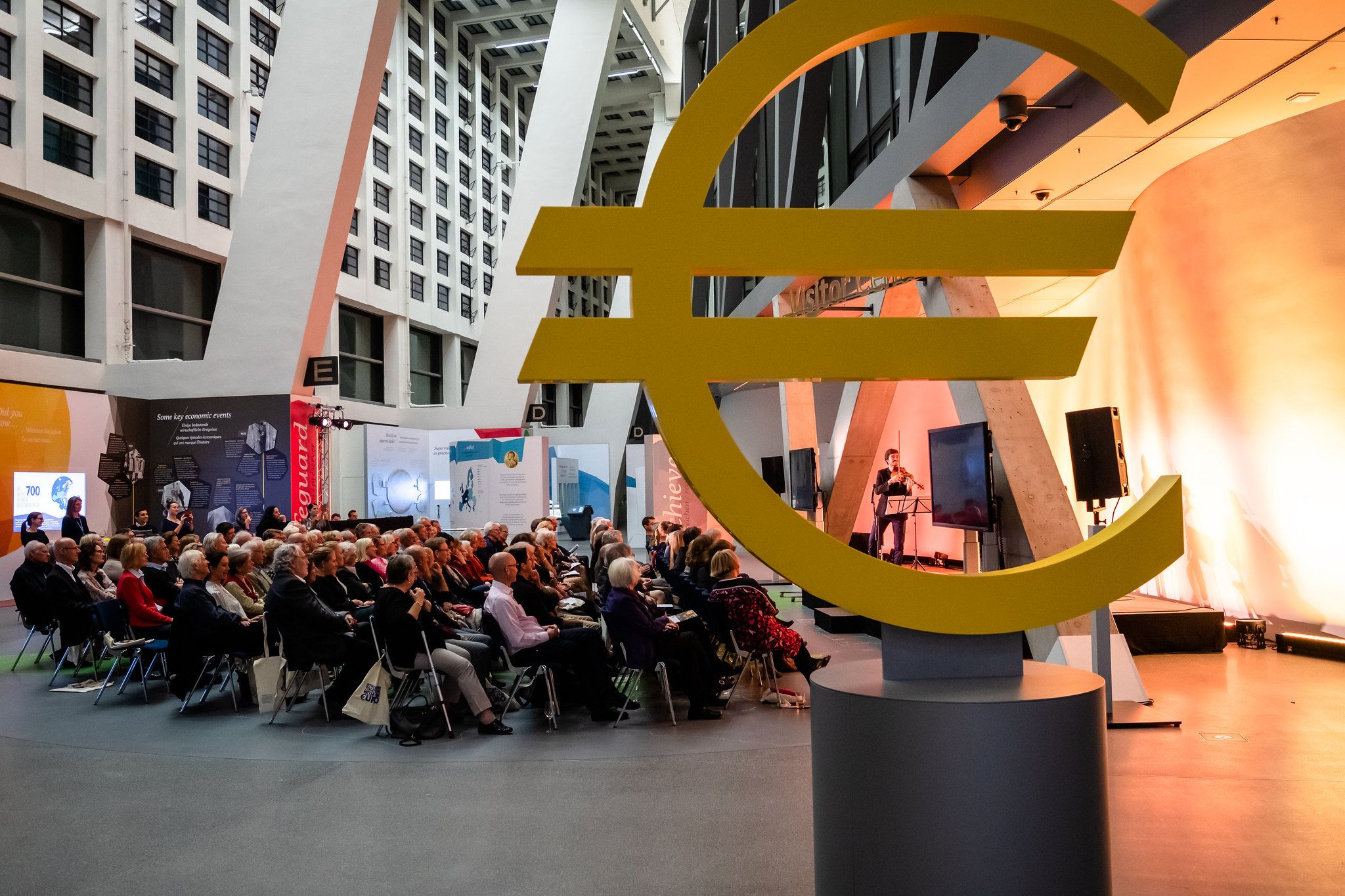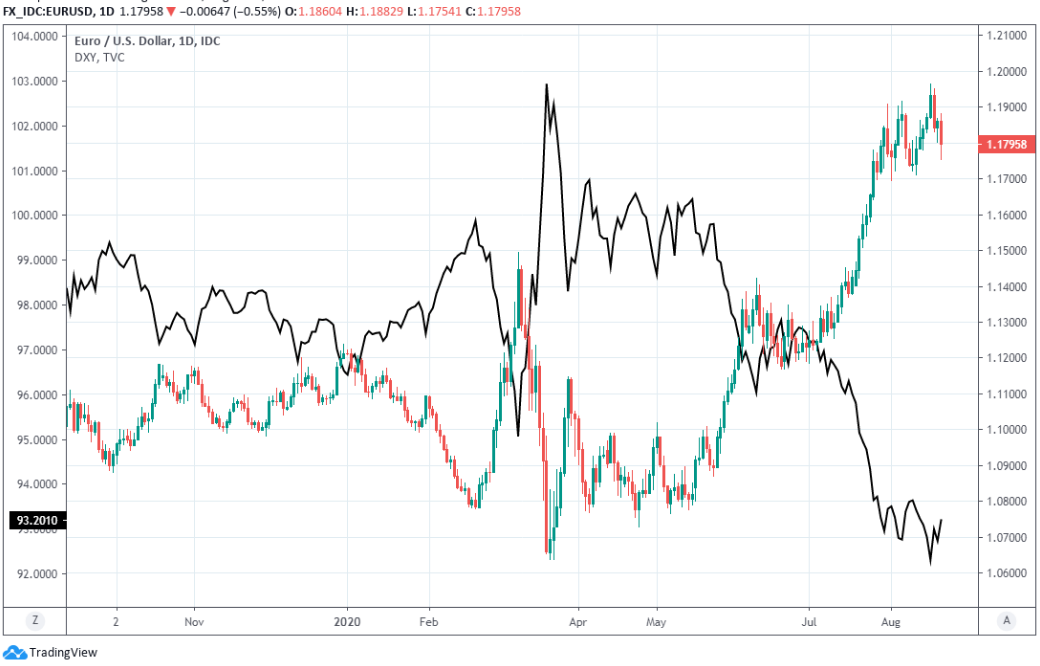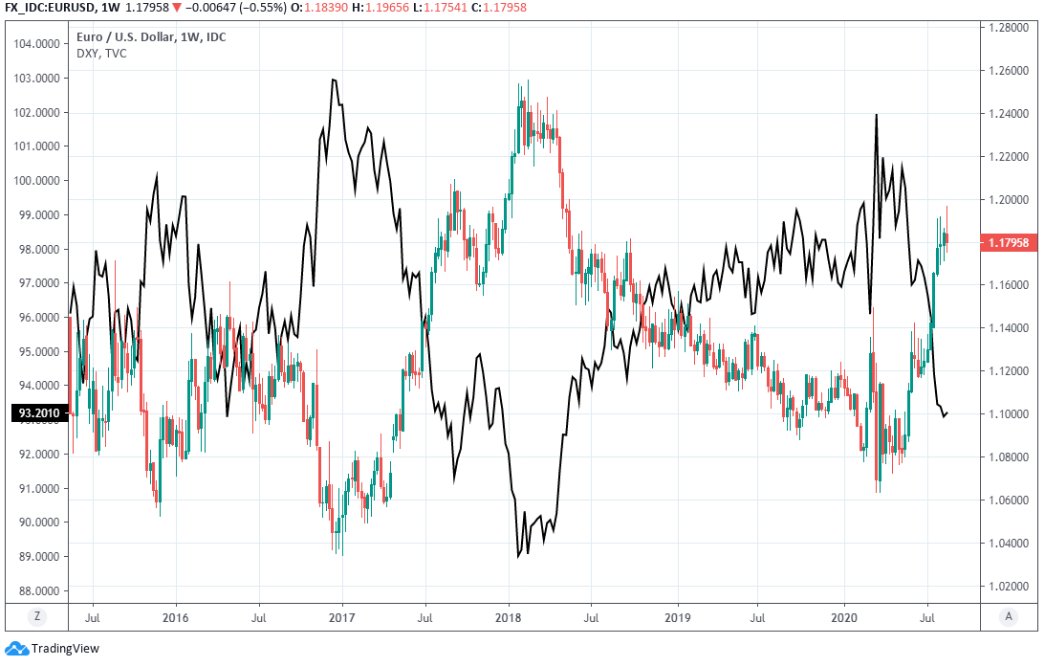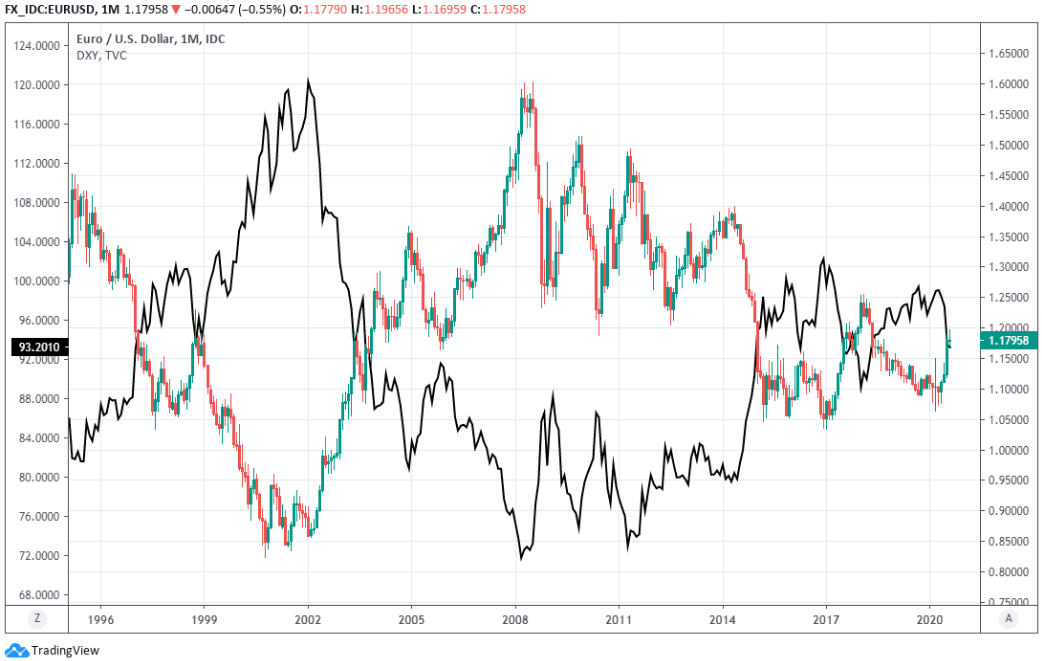Euro-to-Dollar Dollar Week Ahead: In the Crosshairs of Correcting U.S. Greenback
- Written by: James Skinner
-
- EUR/USD at centre of USD correction after hitting new highs.
- Stretched positioning, gloomy PMI data prompts retracement.
- Analysts eyeing USD rebound before Fed's Powell hits stage.

Homepage Image © European Union 2018 - European Parliament. Webpage Image © European Central Bank.
- EUR/USD spot rate at time of writing: 1.1796
- Bank transfer rate (indicative guide): 1.1383-1.1466
- FX specialist providers (indicative guide): 1.1619-1.1690
- More information on FX specialist rates here
The Euro-to-Dollar exchange rate confirmed the end of its eight-week winning streak on Friday after IHS Markit PMI surveys surprised on the downside and in the process, helped condemn the single currency to a correction from two-year highs, which is expected to play out amid a rebound for the greenback.
Europe's single currency ceded ground to most major rivals last week including the Dollar, bringing an end to a two-month run of unbroken gains while potentially putting at risk the multi-month uptrend in the Euro-to-Dollar rate.
Friday saw French and Eurozone PMI surveys slump in a market disappointment that proved pivotal to the trajectory of the major exchange rates ahead of the weekend, while weakness in the German services sector added to the glum mood that sent EUR/USD lower and the Dollar Index higher.
"EUR/USD dropped to 1.1800 on disappointing PMI data, which raises questions about whether the “bird’s wing” recovery is broken. The Bank of France has suggested a bird’s wing best describes the likely profile of this recovery, with an initial sharp bounce in activity as the lockdown eases followed by more measured gains thereafter," says Daragh Maher, North American head of FX strategy at HSBC. "Elevated unemployment levels into 2021 could see a return of populism in the polls, undermining EUR bulls who argue the EU recovery fund has removed fragmentation risks for the currency. In addition, the rising COVID-19 case count in the Eurozone may pressure future PMIs."
A quiet economic calendar this week could mean the gloom kicked up by this data hangs in the air in the days ahead, enabling an oversold greenback to carve out a short-term bottom in the wake of two months of losses.
Further weakness may test the nerve of a record 'net long' position among speculative investors, which has built steadily over recent months but with a marked step up in appetite for the single currency since late July.
Above: Euro-to-Dollar rate shown at daily intervals alongside Dollar Index (black line, left axis).
"The Euro has held in a 1.170-1.195 range this month, and our best guess is that the currency will remain stuck around current levels over the short-term," says Zach Pandl, global co-head of foreign exchange strategy at Goldman Sachs. "In light of relatively long positioning in options, as well as a lack of near-term catalysts now that the Recovery Fund has been priced, we could envision a moderate near-term pullback in the cross. On the other hand, medium-term flows should remain supportive, and will likely prevent a bigger retracement."
Eurozone PMIs contradict the dominant prevailing narrative of a continental economic outperformance of the U.S., which is thought to have been instrumental in driving the recent sell-off in the Dollar, which took place amid a celebration of the EU's coronavirus recovery fund.
The potential rub for the Euro on the road ahead is that the recovery runs out of steam before the New Year in which the mammoth spending programme will begin with the EU's new seven-year budget period.
If investors grow doubtful about the outlook following a double-digit percentage rally since late May then the Euro could find itself under pressure.
Add to this a swelling second wave of coronavirus in Europe and the ingredients for a Euro-to-Dollar rate correction could be on the table.
Some analysts and economists said the downturn in July's PMI surveys was the result of second wave concerns among businesses and households.
"The case for structural Dollar weakness remains intact, in our view. The currency is overvalued, US real rates will likely remain deeply negative for a number of years, and the global economy should be on a steady upward path," Pandl says. "This is a standard recipe for sustained Dollar weakness. However, over the next few weeks recent consolidation may continue, due to uncertainty around Covid control, the Fed policy outlook, and US politics."
Above: Euro-to-Dollar rate shown at weekly intervals alongside Dollar Index (black line, left axis).
The Euro-to-Dollar rate is increasingly up against it on the charts too, which is increasingly up against it on the charts as well as, where the single currency is seen on course for a test of support levels located just beneath the 1.17 level.
"The new high has been accompanied by a 13 count (TD resistance at 1.2014), and divergence of the daily RSI, all of which point to a correction lower near term," says Karen Jones, head of technical analysis for currencies, commodities and bonds at Commerzbank. "Provided that dips remain well supported by both the 1.1673/61 (a double Fibo) and the 3 month uptrend at 1.1604, an upside bias is maintained. This guards the March high at 1.1495."
Jones advocated on Friday that Commerzbank clients wait until the Euro pulls back to around 1.1660 before buying it but would walk away from such a bet if the single currency fell below 1.16.
"The EUR has quickly fallen from what had seemed like a breakout of its 1.17-1.19 trading channel, reaching as high as the mid 1.19s, to now trade squarely in the middle this band and looking liable for a test of the range’s bottom," says Juan Manuel Herrera, a strategist at Scotiabank.
Herrera and the Scotiabank team look for the Euro to find firm support near to 1.1700 but also warned that recent price action is suggesting the "upward trajectory since May of this year" may be at risk. (If you would like to book in an exchange rate around current levels for use at a future date to protect your international payments budget, or would like to automatically book a higher or lower rate should it be achieved, we would suggest investigating the tools at your disposal.)
"The USD sell-off has been the main theme in FX markets in recent months. Although most USD selling has been against the EUR, the USD has weakened across the board, while the EUR has remained broadly stable against non-USD currencies. The USD move has been correlated with the strong rebound in risk assets since March," says Athanasios Vamvakidis, head of FX strategy at BofA Global Research.
Above: Euro-to-Dollar rate shown at monthly intervals alongside Dollar Index (black line, left axis).
"Investors we talk to expect EURUSD to soon cross above 1.20. The market almost tested this level this week, but the Fed minutes came in the way by not being as dovish as markets had expected. Despite the strong bullish EURUSD market sentiment and our estimates for the long-term EURUSD equilibrium between 1.20-1.25, we expect weakness in the rest of the year and we have updated our forecasts to 1.14-going to 1.20 next year," Vamvakidis adds.
The economic calendar is devoid of major data although from mid-week onward market attention will turn to the annual Jackson Hole Symposium where Federal Reserve Chairman Jerome Powell and Bank of England Governor Andrew Bailey are both expected to speak about monetary policy.
Chairman Powell will address an audience around 14:10 Thursday and while its 'framework review' and increasingly "symmetrical" view of the inflation target are a likely focus of the market, and a Dollar-bearish one, the long-term implications of the coronavirus crisis for the bank's monetary policy toolbox.
"Given Jackson Hole, we doubt investors will want to chase the dollar too much higher and would think that the DXY correction could stall before 94.00. If we’re underestimating the scale of the dollar rally it may be that events in Belarus – were they to deteriorate – could have triggered a larger EM correction," says Chris Turner, global head of markets and regional head of research at ING. "EUR/USD could briefly dip under 1.17 if the correction gains momentum, but we do not see wholesale changes taking place to the factors which have driven the rally and thus are happy to keep a one-month target at 1.20."
The unprecedented amounts of new money created to fund extraordinary policy supports for the economy could forever have changed the way the Fed combats crises and in a manner that sees future balance sheet expansions working their way more effectively and directly into the real economy.
From corporate bond purchases to government bond buys that are closely coordinated with Treasury fiscal plans, the Fed's new policy bag is a Dollar bearish one and should Powell delve into this subject on Thursday then he might ensure a soft finish to the week for the greenback
The same is true of other central banks including the Bank of England (BoE), which has despatched Governor Andrew Bailey to Jackson Hole where he'll address an audience around 14:05 Friday. Sterling will be listening keenly for clues about how the BoE's policy stance could change in the months ahead.







